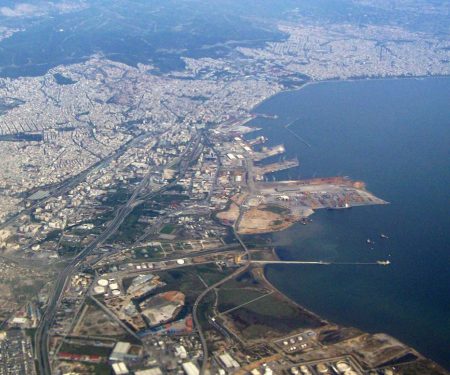Event
26.01–28.01.2018: Yeni Camii, Thessaloniki, GR
Syndrome of the Present is a research based project deriving from the fields of visual art. It aspires to establish a collaborative, cross disciplinary platform, shared between artists and experts from diverse geographies and disciplines. A platform, which enables collective thinking in order to analyze the present’s syndrome and the present as syndrome.
Introduction by Galit Eilat:
We live today in a state of crisis. At least, this is what we have been told: environmental, political and economic catastrophes, the debt crisis, exceptional reforms, preventive actions, socio-economical ‘critical points’, recoveries and survivals are dramatically changing our way of life. The crisis is a fact and catastrophes are real events. Yet catastrophe has also become a rhetorical tool used to reinforce a general state of anxiety and the sensation of imminent collapse. The rhetoric of crisis suggests a daily apocalyptic scenario in which preventive measures and emergency interventions are required to ensure the survival of neoliberal exploitative forms of governance.
Abrabanel, Hobbes and Schmitt, among other political philosophers, situated the potential catastrophe in the future to make use of it in the present as a tool for consolidating and intensifying collective consciousness, and for defending the political body and the sovereignty of the state. Nowadays, policymakers understand that by means of maintaining and managing the prospect of a potential catastrophe, they can preserve the collective political consciousness of the states they rule (or the capitalist systems they benefit from, wall-street etc.), and use fear as the last adhesive that preserves the unity of the national political entity. This only functions to distract one from the fact that the event of catastrophe – and the psychological effects of the crisis – provide for continuous of social and cultural exploitation.
The political power of eschatological movements is mounting while they attract a considerable number of followers to their ranks, the ‘state’ is under attack from the left, right and within, while state of emergency declarations have become a part of daily life. The systematic weakening of the state’s democratic structure is happening in parallel with the remarkable resurgence of interest in religion, which has become one of the defining global issues of our time and has an inescapable hold over us. As the intersection of political and theological thoughts is gaining global momentum, the nature of human sovereignty and its propensity to generate catastrophic violence is escalating. The escalation of acts of violence and political maneuvers force us to take a position and to choose sides. Nationalism, religion, gender, and race are manipulated by the political elite to divide society and turn people against each other. Schism, conflicts, and displacement are more prevalent now than in the last 70 years, while food, information, and goods are produced in larger quantities than at any other moment in human history.
The project’s starting moment is the 17th century central Europe, in which the cornerstones of present conflicts were laid. The 17th century was the moment in which the religious reformation, sovereign state, democracy, citizenship and human rights were constituted in response to decades of religious wars. This century was accompanied by outbursts of messianism and scientific development, economic and cultural progress, as signs of the expectation that the world would change for the better. Today it seems that we are heading backwards and progressing towards the state of an internal war; the sovereign state is under attack, democracy is at risk, citizenship is replaced by consumerism and human rights are fully disrespected.
Two 17th century protagonists, the ‘Messiah’ Sabbatai Zevi and the Philosopher Baruch Spinoza, constitute a ‘time tunnel’ in the project that establish links between past and present, eschatology and politic, and create a perspective for insights into contemporary events. Both protagonists offer a revolutionary worldview and both were ahead of their time in their attempts to redefine the relations between God, man and society (state).
The 17th century has been formative for our contemporary reality in many ways: Europe’s religious wars ended with the Peace Treaty of Westphalia, which exiled religion from the supreme power. Secular sovereignty inverted the monarchical paradigm: the people appropriated the king’s power, turning the sources of political authority upside-down. Tolerance “as a government-sanctioned practice” in Europe’s Christian countries was institutionalized at this time. The sovereign ruler and the (national) territorial state became the “administrators of tolerance” in the early modern era, and promised to secure peace within their states. Westphalian secularization meant the beginning of Europe’s institutionalization of religious tolerance and freedom. However, it also sowed the seeds for the modern grand myth of nationalism and its authoritarian suppression of heterodox movements and accounts. International law proved to be a means for the protection of sovereignty as much as a neutralized tool for the systemic oppression of the designated Other. Hence, the myth of Westphalian peace is now a challenge to overcome.
*
The present crisis also presents a moment of possibilities: the destruction that leads us to face the crises also opens doors to re-imagine a future where equality, dignity, wealth, justice, mobility, and education are equally shared among each one of us. In order to accomplish this, we have to know how to look back, to see what was imagined for us.
